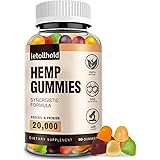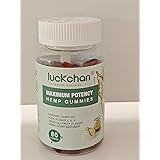Are you curious about the evolving world of medical cannabis and its potential health benefits? As Dr. Wagner explains in the video above, there’s a fascinating history and a complex science behind why this plant is increasingly recognized for its therapeutic potential, despite past regulations.
Understanding the Endocannabinoid System (ECS) and Medical Cannabis
For years, medical experts faced a puzzle. Patients reported significant relief using cannabis, yet the government classified it as a Schedule I drug, implying no medical benefits. This classification created a major hurdle for research. However, recent scientific breakthroughs have shed light on a crucial biological system within our bodies: the endocannabinoid system, often called the ECS.
Think of the ECS as a master regulator for many vital bodily functions. It’s a complex network composed of endocannabinoids (compounds our body naturally produces), cannabinoid receptors (like locks on cell surfaces), and enzymes that break them down. These components work together to help maintain balance, or homeostasis, throughout our system.
The ECS plays a role in a wide array of physiological and cognitive processes. This includes:
- Appetite and digestion
- Pain sensation and inflammation
- Mood regulation and stress response
- Memory and learning
- Sleep cycles
- Immune function
- Fertility and pregnancy
Our bodies naturally produce molecules, such as anandamide, which interact with this system. Interestingly, the cannabis plant contains over a hundred different chemical compounds called cannabinoids. Two of the most well-known are Tetrahydrocannabinol (THC) and Cannabidiol (CBD).
What’s truly remarkable is how these plant-derived cannabinoids mimic our body’s own endocannabinoids. For instance, THC is nearly identical on a molecular level to anandamide, a natural endocannabinoid. This allows cannabinoids from the cannabis plant to bind perfectly to our body’s CB1 and CB2 receptors. These receptors are found throughout the brain and central nervous system (CB1) and in the peripheral organs and immune cells (CB2).
This natural interaction is why researchers believe cannabis holds such profound medical potential. It can influence and support our own regulatory systems.
A Deep Dive into the History of Cannabis Legality
The story of cannabis in the United States is far from straightforward. As Dr. Wagner points out, the idea that cannabis has “no medical benefits” is relatively new. Before 1937, cannabis was legal and widely used in medicine. Physicians prescribed it, and people could easily purchase cannabis-based medicines from their local pharmacies, much like any other over-the-counter remedy today.
However, this all changed rapidly. The shift in public perception and legal status can be traced back to a surprising industrial rivalry. In the 1930s, the burgeoning hemp industry posed a significant threat to established timber and lumber companies. Hemp, a variety of the cannabis plant, could be used to produce paper, textiles, and ropes far more efficiently and quickly than wood-based products.
Many major newspapers of the era were owned by lumber interests. As competition intensified, these newspapers began publishing sensationalized and often misleading articles demonizing all forms of the cannabis plant. This propaganda campaign, often associated with the infamous “Reefer Madness” era, created widespread fear and prejudice against cannabis.
In 1937, the Marijuana Tax Act was passed, imposing a hefty tax on the sale of cannabis. While ostensibly a tax law, many historians and advocates argue its true intent was to cripple the hemp industry and restrict access to all cannabis. This act effectively pushed cannabis out of mainstream medicine. Decades later, with the passage of the 1970 Controlled Substances Act, cannabis was officially classified as a Schedule I drug, outlawing it entirely for any use, medical included.
Yet, the tide is turning once again. Approximately 50 years after the 1970 act, we are seeing significant shifts in cannabis policy. Today, medical cannabis is legal in 33 states, and recreational use is permitted in 11 states. This rapid re-evaluation highlights a growing recognition of its potential and a departure from outdated prohibitions.
Why Has Research Lagged? The Funding Challenge
Given the extensive historical use and anecdotal evidence, why has it taken so long for substantial research into medical cannabis to emerge? The answer, as Dr. Wagner explains, is primarily tied to its Schedule I classification. This designation means the government views it as having a high potential for abuse and no accepted medical use, making it incredibly difficult to obtain federal funding or regulatory approval for research studies.
Without government backing, large-scale, rigorous clinical trials are challenging to conduct. This lack of official support created a Catch-22: no research because it’s illegal, and it stays illegal because there’s “no research” to prove its medical benefits.
Despite these hurdles, progress is being made. In the fiscal year 2017, the NIH (National Institutes of Health) supported 330 research projects, allocating almost $140 million to cannabinoid research. This significant investment indicates a shift in scientific interest and a growing understanding of the plant’s compounds.
A striking example of this evolving perspective is US Patent Number 6630507. Granted in 2013 to the US Department of Health and Human Services, this patent covers the potential use of non-psychoactive cannabinoids as neuroprotectants. It suggests these compounds can protect the brain from damage or degeneration caused by various diseases. The irony is profound: the government holds a patent on the therapeutic potential of cannabinoids while simultaneously classifying the plant that produces them as having no medical value. This contradiction fuels ongoing debate and prompts many to question the current federal stance.
FDA-Approved Cannabinoids vs. the Whole Plant
It is important to distinguish between FDA-approved cannabinoid-based medications and the cannabis plant itself. The FDA has not approved the whole cannabis plant for medical use. However, it has approved several drugs that contain individual cannabinoids or synthetic versions of them:
- Marinol and Syndros: These contain Dronabinol, a synthetic form of THC. They are approved to treat nausea and vomiting caused by chemotherapy and to stimulate appetite in people with HIV/AIDS who experience weight loss.
- Cesamet: This drug contains Nabilone, another synthetic substance similar to THC. It is also approved for treating chemotherapy-induced nausea and vomiting.
- Epidiolex: This is a highly purified form of CBD, derived directly from the cannabis plant. The FDA approved Epidiolex for treating severe and hard-to-treat forms of epilepsy, specifically Lennox-Gastaut syndrome and Dravet syndrome, in patients aged two and older. Studies have shown dramatic reductions in seizure frequency for many patients taking this medication.
These approvals represent a significant step forward, validating the therapeutic effects of specific cannabinoids. They also highlight the scientific community’s growing understanding of how these compounds interact with the human body.
Potential Medical Benefits of Cannabis and Cannabinoids
Emerging research and clinical trials, often conducted in countries with more lenient cannabis laws like Israel and Spain, continue to uncover a wide range of potential applications for medical cannabis. Scientists like Dr. Raphael Mechoulam in Israel have pioneered studies into cannabis’s effects on Alzheimer’s patients and epilepsy, while Dr. Manuel Guzman in Spain has researched cannabis and glioblastoma brain tumors. These studies suggest a promising future for cannabis in medicine.
While more long-term research is needed, current findings suggest cannabinoids may offer benefits for several conditions:
- Chronic Pain and Inflammation: Cannabinoids, particularly CBD, are known for their anti-inflammatory and analgesic (pain-relieving) properties. This makes them a potential option for conditions like arthritis, neuropathic pain, and general chronic discomfort.
- Nausea and Vomiting: As evidenced by FDA-approved drugs like Marinol, THC has strong antiemetic effects, making it effective for chemotherapy-induced nausea.
- Seizure Disorders: Epidiolex’s approval for severe epilepsies underscores the potent anticonvulsant properties of CBD.
- Multiple Sclerosis (MS): Cannabinoids can help relax tight muscles and reduce spasms, improving the quality of life for MS patients.
- Appetite Stimulation: THC can stimulate appetite and reduce weight loss, particularly beneficial for people with cancer or HIV/AIDS.
- Neuroprotection: Research, including the US government’s own patent, points to cannabinoids’ potential to protect brain cells from damage, which could be relevant for conditions like Alzheimer’s disease.
- Gastrointestinal Issues: The anti-inflammatory properties of cannabinoids may offer relief for conditions like Crohn’s disease.
- Mental Health Conditions: Preliminary studies suggest potential benefits for anxiety, Post-Traumatic Stress Disorder (PTSD), and even some symptoms associated with schizophrenia, though this area requires careful and extensive research.
Safety and Responsible Use of Medical Cannabis
Is medical marijuana safe? The answer, as Dr. Wagner emphasizes, is still somewhat complex because the plant isn’t federally regulated. This lack of regulation means that the dosage, concentration of cannabinoids (like THC and CBD), and the specific plant varieties can vary wildly. These factors all play a key role in a patient’s safety and the effectiveness of the treatment.
Scientists agree that more long-term research is essential, just as it is for any pharmaceutical drug on the market. There are valid concerns about the effects of cannabis on young people, whose brains are still developing. Therefore, careful consideration and guidance are paramount, especially for adolescents.
If you are considering using medical cannabis for an ailment, it is crucial to have an open and honest discussion with your doctor. They can help you understand the potential risks and benefits, especially concerning drug interactions and your specific health conditions. Together, you can make a shared, well-informed decision.
Remember these important safety guidelines:
- Do not use cannabis or cannabinoids to postpone seeing a healthcare provider about a medical problem you have. It should be considered as a potential complementary treatment, not a replacement for conventional medical advice.
- Be aware that driving or operating heavy machinery under the influence of cannabis is dangerous. It impairs judgment and reaction time, similar to other medications.
- Always source medical cannabis from reputable, legal dispensaries where products are tested for purity and potency. This helps ensure you know exactly what you are consuming.
The journey of medical cannabis from ancient remedy to controversial substance and now to a re-emerging therapeutic option is ongoing. With continued research and thoughtful regulation, its full potential to improve lives for people facing various medical conditions may soon be fully realized.











